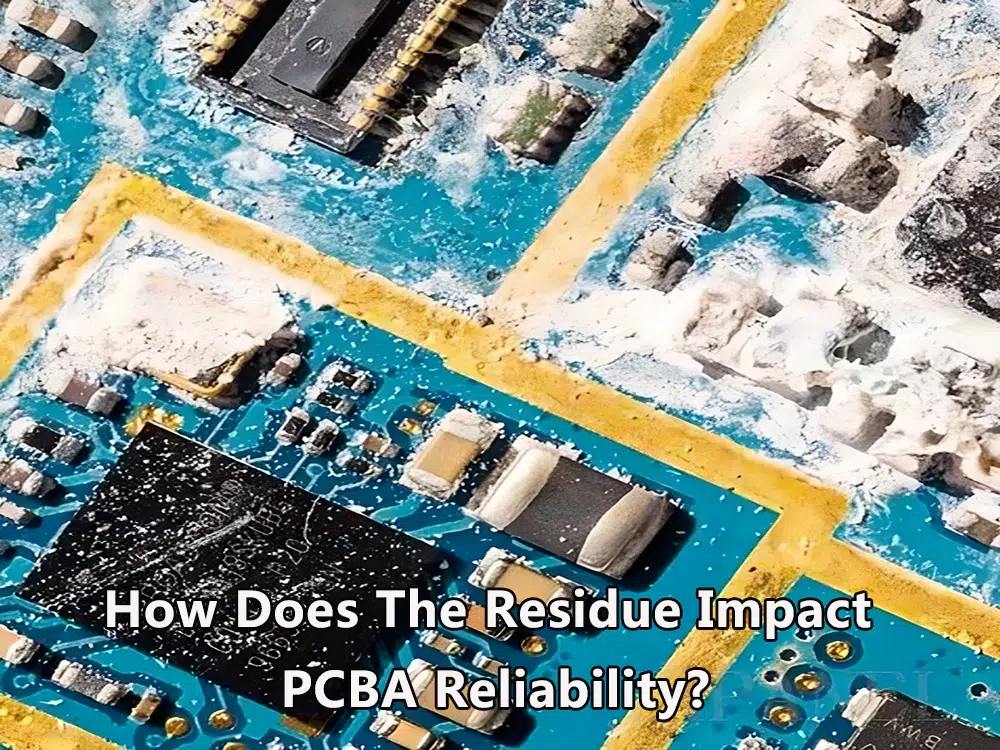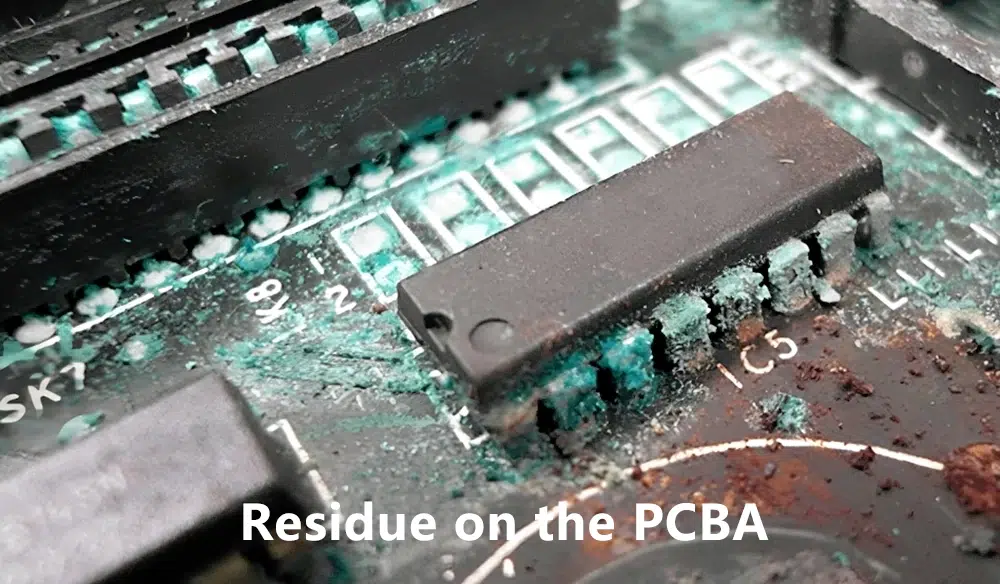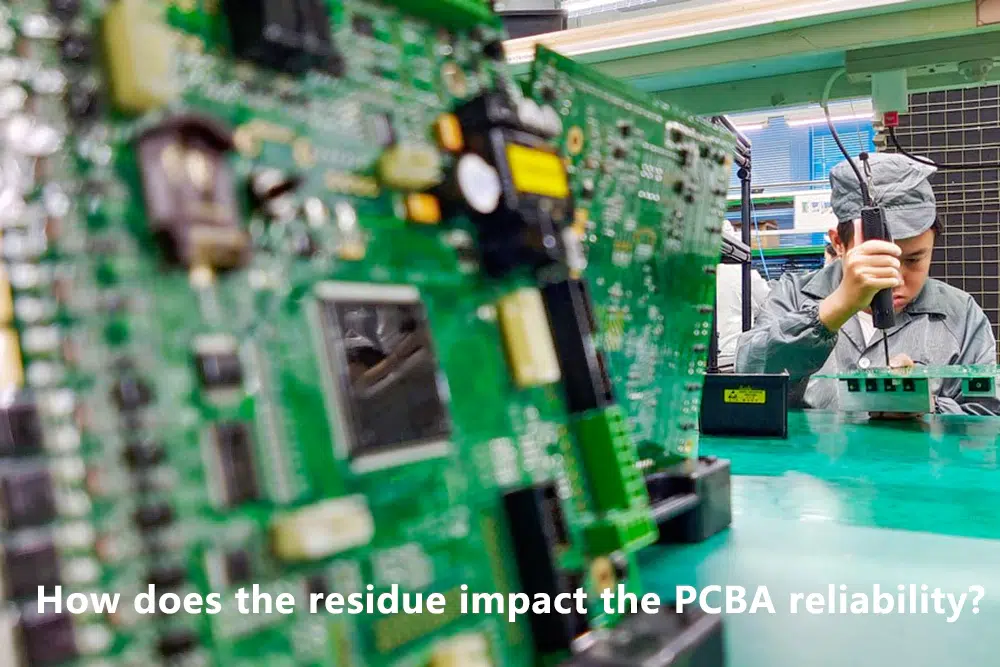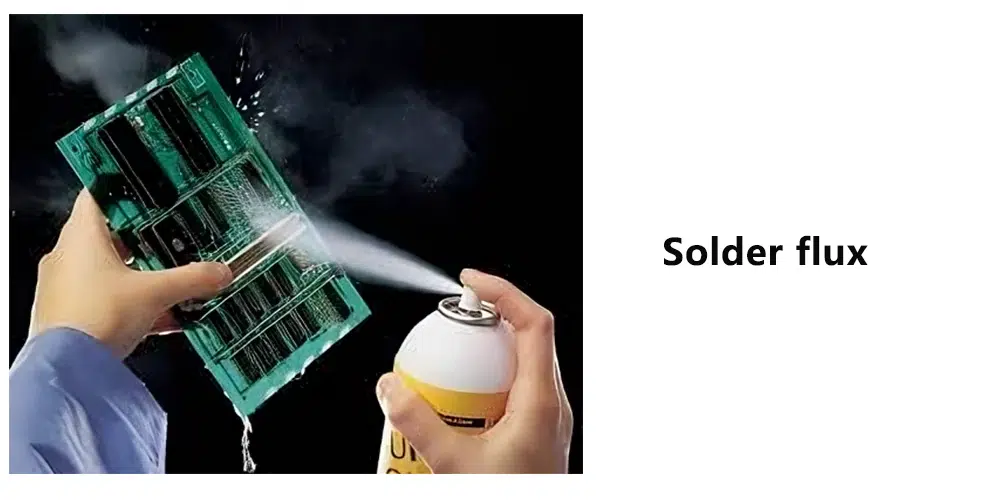
With the development of electronic information industry, high requirements are needed on PCB assembly technology. Besides, the reliability and quality of electronic products mainly depend on the reliability and quality level of PCBA. However, residues, which have great impact on the reliability of PCBA boards, are generally ignored during manufacturing. Thus, in this article, let’s find out how the residue impact the PCBA reliability.

In general, residue on the PCBA usually comes from the assembly procedure, especially the soldering process. Such as flux residues used, by-products of the reaction between flux and solder, adhesives, lubricating oil and other residues.

Excessive residues not only affect the appearance of PCBA, but more importantly, cause functional failure. Therefore, the possible impact of residues on the reliability of PCBA can be serious.
In addition, different types of residues have different effects on PCBA in different ways. Resin residues will mainly cause increased contact resistance and even open circuits. The ionic residues will not only cause a decrease in insulation performance, but also cause corrosion of the PCBA. Then, it can also cause an open circuit or a short circuit, which makes the entire PCBA board fail to work.
When the PCBA is assembled into a complete machine and used for a certain period of time, especially in the hot and humid environment, if there are ions on the surface of the PCBA, electromigration will easily occur.
That is, when the PCBA is working, there is an electric field between the solder joint (discs), if there is moisture, and the ions will form directional migration, and finally form a current channel, resulting in a decrease in insulation.
The most common example is that many monitors or TVs have blurred or delayed images when they are turned on. If silver-containing solder is used on the PCBA, after the silver is corroded into silver ions, electromigration is more likely to occur. And the function of the PCBA with electromigration failure often returns to normal after necessary cleaning.
In the PCBA assembly process, some resin residues such as rosin often contaminate PCB gold fingers or other connectors. When the PCBA heats up or in hot climates, the residues will become sticky and easy to absorb dust or impurities, causing increased contact resistance and even open circuit failure. That is the reason why many communication equipments (such as switches) and high-voltage power room equipment need regular cleaning and maintenance.
Through the analysis of the source of PCBA residues and the reliability problems that residues may cause to PCBA, some methods can be taken to reduce the PCB residue occurred and improve cleanliness.
PCB materials and components should ensure that there are no obvious pollutants on the surface. The pollutants on the surface of components will also be brought to the PCB due to process reasons. Generally, the ionic pollution of PCB should be controlled below 1.56mgNaCl/cm2, and the same cleanliness requirements should be ensured while maintaining solderability of components.
In many PCB manufacturers, the assembled PCBAs are stacked randomly. The workshop environment is poor, and there is no ventilation equipment. these can easily cause PCBA products pollution, but sweat stain pollution is inevitable. Therefore, necessary measures must be taken to ensure the strict operating conditions and clean requirements.

It mainly includes the selection of low-solid or no-clear flux. The ideal flux will fully utilize the active substances in the flux due to preheating and soldering heat in the process, as well as the cleaning of tin waves, and keep the cleanliness to the best level.
In addition, the solder paste used by SMT is the same. Some solder pastes have a lot of residues and are extremely difficult to remove, so the selection is very important. It is best to choose from the products that have passed the inspection and conduct necessary process tests before making a decision.
The main residue of PCBA comes from flux. Therefore, under the condition of ensuring the welding quality, the preheating and welding temperature during welding should be increased as much as possible, as well as the necessary welding time, so that as many ion residues as possible will decompose or volatilize with high temperature for obtaining a clean PCBA board.
Moreover, other control measures can also be considered, such as using moisture-proof resin to protect the surface of PCBA, indirectly prevent or reduce the impact of ion residues.
At present, the ionic pollution of most PCBA is difficult to reach less than 1.56mgNaCl eq./cm2 before cleaning. Either negotiate with the user to lower the requirements, or many PCBAs with high requirements must go through strict cleaning procedures.
When cleaning, it is necessary to target not only rosin or resin, but also ionic residues, and clean based on the principle of chemical similarity and compatibility. Cleaning is the process of dissolving residues, so polar and non-polar mixed solvents must be used to effectively remove PCBA residues.
Besides, due to the expansion of environmental protection calls, many solvents with good performance may not be used (such as HCFC series solvents). When a clear process must be used, it cannot cause new pollution to the environment. This is indeed not an easy task for many manufacturers.